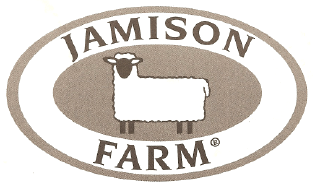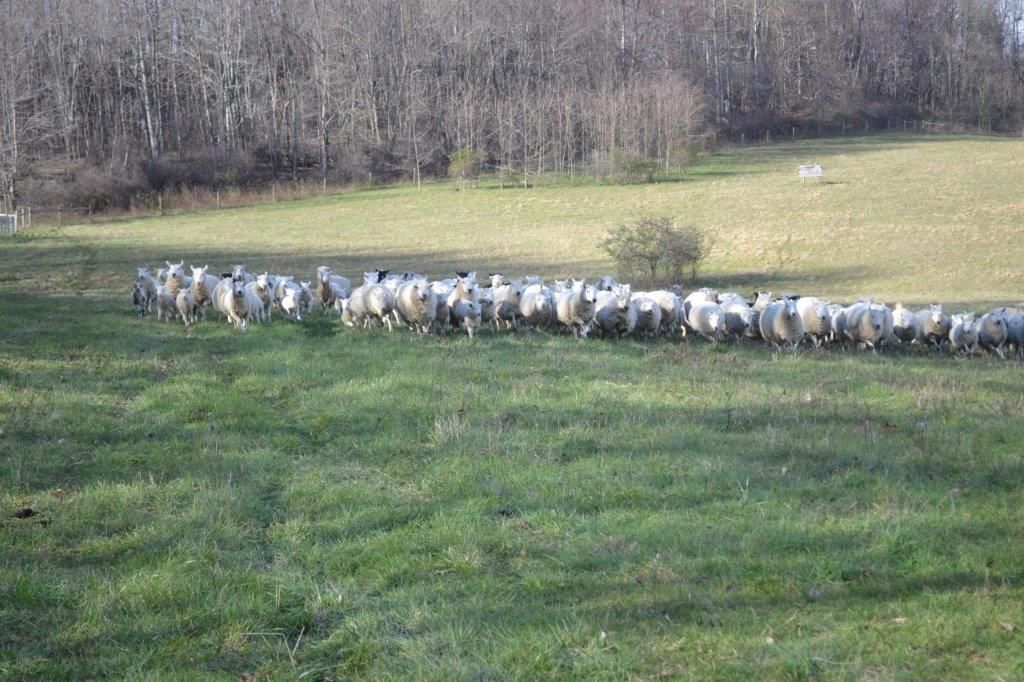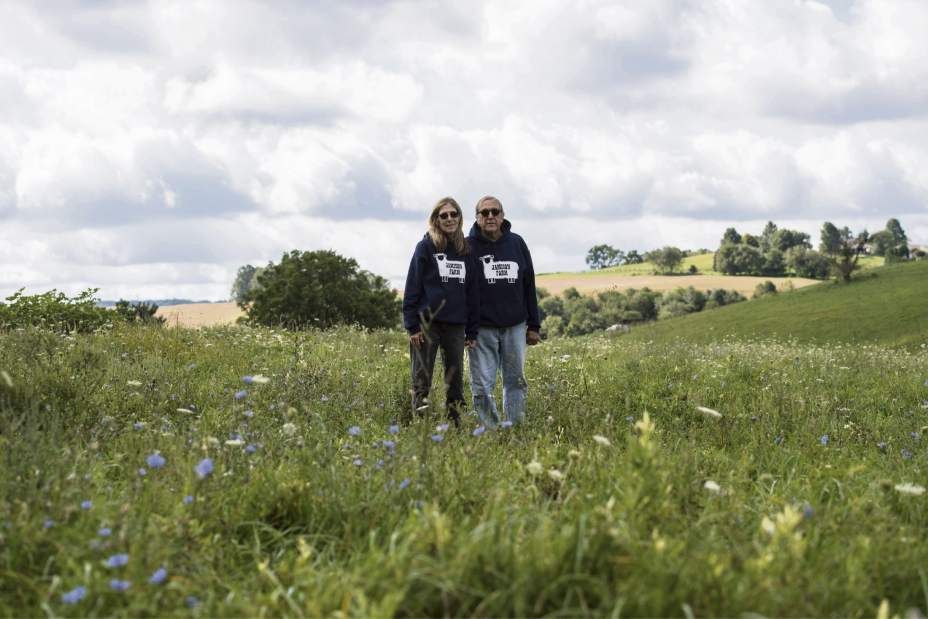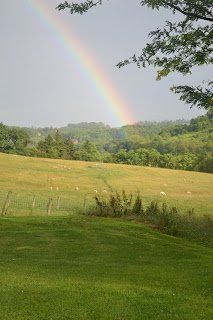BLOG
Blog
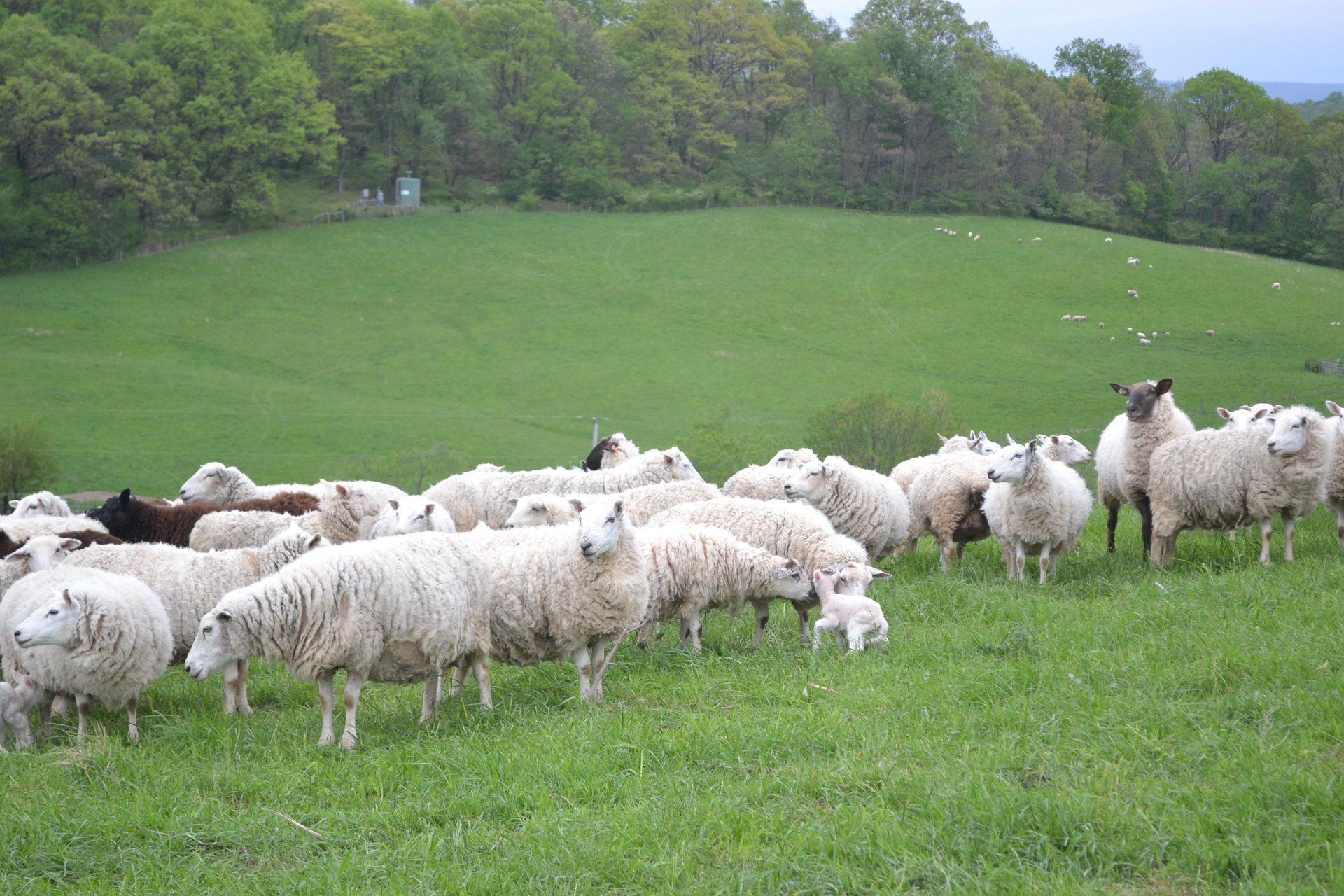
By John Jamison
•
24 May, 2022
So on April 16, my birthday, I tapped a fresh keg of Sierra Nevada Pale Ale which I keep in my Walk In cooler in our barn. It was, after all, my 75 th birthday, so I do deserve such luxuries in my Golden Years. As the Walk In is 300 yards from the house, the round trip of 600 yards, in my mind, makes the consumption of the beer calorie neutral and rationally justified as at the end of the day, Beer truly is “The Farmer’s Friend.” We also had our first set of twins from our ewe flock on the 16th. The weather though has been unseasonably cold and rather hard on the lambs. We will probably schedule our lambing for later next year. But don’t get me started about Climate Change. Last year was a warm spring, this year it was not. I don’t know why and neither do you. What I do know is that we have rotationally grazed our paddocks for thirty seven years, never having broken the soil. We have been practicing Regenerative Agriculture since the mid-seventies before the term became recognized from Robert Rodale. Indeed, Jamison Farm was featured in the first Russian Publication of New Farm, The Magazine of Regenerative Agriculture by Rodale Press. I also know that after our thirty seven years of intensive rotational grazing we have sequestered somewhere around 40 metric tonnes on average of carbon per hectare. How much carbon have you tree huggers sipping martinis on Park Avenue sequestered? So why am I cranky? We have been farming the right way since we began, much to the bemused astonishment of our neighboring conventional farmers who plow, disc, seed, fertilize and spray chemicals to control the weeds. We didn’t really start out with that being the goal. We lived in an area with incredible grass growth due to geographical location and 40-45 inches of timely rainfall per year which produces optimal conditions. We don’t take a Political Bent, we are proactive with what we can control and reactive to what we can’t control from Mother Nature; it's our agricultural take on The Serenity Prayer. As Sukey says, Spring is special to us. Last week, the first week of May, was not a great week for us with high winds and power outages affecting equipment and the Flu affecting me. But it’s still Spring, finally. The lambs are on the ground, we are foraging for Morels; Sukey asked me if I wanted salad or asparagus for dinner? Helloooo? Our first bed of asparagus we planted thirty seven years ago. The new one is only about ten years old. When the asparagus comes up, we eat it probably every other day. All other veggies are on hold during this season. And then, when Sukey is feeling really domestic, we have her fool proof Hollandaise slathered over the asparagus. It was also the week of Sukey’s Birthday. Our friend and Mentor, Jean-Louis Paladin would have been 76 on May 7. He was quoted, “When I went to the farm, I saw they were raising the lamb outside just as in France. For me, it’s the best lamb in the country.” He felt that raising animals unconfined outside was important. We put up fence and rotated the pastures, based on the writings of another Frenchman, Andre Voisin. That’s it; no fertilizer, no chemicals, no nothing! And the Sheep and Lambs eat the weeds. Here is what it looks like outside. https://photos.app.goo.gl/F7ENeECwfNY14Qau9
By Sukey Jamison
•
08 Mar, 2022
It was either lunch today or dinner New Year’s Eve that got me thinking. Today a talented chef with a large Food Service Company prepared rib chops from our rack of lamb for a presentation to a chef from a very successful local restaurant. On New Year’s, the lovely Sukey who can cook a rack of lamb like nobody’s business, prepared chops like nobody’s business. Both presentations were incredible. One was for a sales pitch to a potential restaurant customer; one was for a college freshman and her parents, who like most parents, wanted to humor their daughter by giving her whatever she wanted. She wanted rib chops. So what’s the big deal, right? Who does not like a chop off the rack? I mean, the rack of lamb is often the main and sometimes most expensive item on the menu. And, with all modesty, if the menu reads “Jamison Farm Rack of Lamb”, it probably is the most expensive item on the menu. Both presentations reminded me of the dinner that first showed me why and how Jamison Farm Rack of Lamb is so good, and possibly, expensive. Before he was famous, Michael Symon was a young chef in nearby Cleveland who was trying to buy lamb for his restaurant, Lolita. Back then, I thought I was famous, but certainly this kid from Cleveland, of all places, wasn’t. Today Michael has TV Shows, Restaurants, Books and who knows what else. When we started selling to him though, we were somewhat famous for having a good product. When he wrote his first book, Live to Cook , with Michael Ruhlman in 2009, his thoughts describing his cooking centered around the quality of the product. That’s what connected him to us. That was the legacy of Chefs like Jean-Louis Palladin who were leading the charge to use great products as the center of the dish. Jean-Louis told me more than once that his job in cooking our lamb was, “just to not eff it up.” On my wall, I still have hanging a copy of one of Jean-Louis’s first menus using our lamb. It was from “Jean-Louis at Watergate” circa 1989. As a Frenchman, Jean-Louis believed in terroir. To Americans that was a concept that, at that time, was largely limited to wines. His description of his dish using our lamb was, “ L’Agneau de lait de Pittsburgh saute aux grits de South Carolina aux ravioles au fromage et consoume aux epices.” In English, “Sautéed Milk fed Lamb from Pittsburgh, South Carolina Grits, Cheese Ravioli and spiced consommé.” He knew that the grass in our area was causing the ewes to have great, full, milky, udders and, therefore, would produce great milk lambs. Later when he switched to using young grass lambs, the same but different quality was there. The lambs were now on grass instead of milk. The taste, though, was different. The young grass lambs were now picking up the taste of the grasses they were consuming. The taste of the meat would change with the seasons. In the early spring, the meat has an onion/garlic taste. Later on in the summer the lamb will pick up hints of anise, and carrot as well as other herbs. Jean-Louis loved the change in the taste that occurred with the seasons. Using his method of “Cuisine Instinque,” he would treat and cook the lamb differently depending on its seasonal taste. So on his menu, the milk lamb was simply sautéed. The grits, ravioli, and consommé were separate products standing out for themselves. Great products allowed to “show off” what they were. When Michael started using our lamb, I was impressed with how he treated it. He was one of the first chefs we dealt with to utilize the “lower cuts.” He was, after all, in Cleveland. When money is not a problem, many eat the middle meats of rack and loin, meaning you’re eating, “high on the hog.” When money is a little tighter, people will utilize the lowercuts. These cuts end up in braises, sausages, charcuterie etc. The flavor is wonderful. Michael was very successful using these cuts in his restaurant. He wanted to have a special dinner featuring our lamb. When we talked about what he had in mind, I was blown away. He wanted to use this “peasant food” as a feature. Remember, this was mid 2000’s, probably 2005 or 2006. We were still concentrating on selling the middle meats of racks and saddles and selling the lower cuts with our own sausages, soups, stews and lamb pie. I wasn’t sure the dinner would get much of a response. It was sold out. So, of the six courses, one was dessert, two featured our lamb as rillettes and sausage, two were braised and slow roasted preparations and one was the center cut rib chop, seared. This was Michael’s cooking. It was wonderful. He was on the line cooking; remember, this was before he was famous. Since he was working in the kitchen, I was charged with saying something about each course as it was served. As you can see from the menu, five of the courses had a matched wine. Sometimes that’s good, sometimes it’s not so good. Usually by the third or fourth course of schmoozing with the guests and then standing up to explain the course, with the proper wine in my hand, my enthusiasm can get the best of me. The dishes were wonderful. I really hadn’t had our lamb cooked like that by anyone before. Maybe it was his Greek vibes coming out. After the dessert, Michael came out to greet the guests. Amidst all the hoopla, he smiled and laughed, just like on TV, and charmed all the diners. After a few minutes of this, the guests started filing out, giving Michael and me and the staff a chance to talk and decompress with an “after service” beverage or two. Michael started asking me which courses I liked the best. I began by telling him of all the chefs that had cooked our lamb, this could have been the best interpretation of all the different cuts. It really was. The slow cooking, rillettes, and use of the lower cuts in general just show what a versatile product lamb is because you can make so many different types of dishes with it. My favorite course that Michael cooked was the “white bean agnolotti.” We’re talking braised lamb shoulder in agnolotti made with white beans. And, if that’s not enough, it was paired with an Oregon Pinot Noir. So, then we talked about the slow roasted leg, the rillettes and the sausage. We were both bubbling, hugging each other, and generally going on about how wonderful each other was; he as the chef, and I as the producer. I think he noticed that I had talked about every course but the chop. I think he thought he screwed up. The rib chop was purple. Not medium rare and pinkish inside, not rare and pink inside, it looked raw and purple inside. But, being the producer seated at a table of paying customers, I had to try it. During that course, the guests at the table waited expectantly as I cavalierly picked up the chop because I was afraid to use the knife. I really thought that maybe it was so raw that I couldn’t cut through it. On a hunch though, I put the chop back on the plate to use a knife and fork. It seemed that everyone seated at the table was watching me to see if they should try to cut the chop or just pick it up and eat it on the bone. I tried the knife. It cut right through the chop. I then took a taste of what was the most tender and flavorful bite of our lamb I had ever had. Back to our discussion which by this time included much of the kitchen crew also enjoying after service beverages. As I was praising Michael and his crew’s great craftsmanship on four of the five courses, they started congratulating me on the quality of the lamb. I started explaining the High Temperature Conditioning procedure we use at our Plant, and how that insures the tenderness of the meat. This was the system we developed when Julia Child complained about the leg of lamb we had given her for her Easter Dinner was, “tasty, but tough.” By this time the “after service beverage” had morphed into a rather loose but joyous “after service celebration with multiple beverages,” as the cold beer favored by farmers and chefs replaced the wine that had matched the dinner courses. Even with this bit of rowdiness, I could see that some of the cooks and, I think, Michael were waiting for some sort of final pronouncement from me about how they had fared cooking Jamison Farm Lamb. Reflecting on the success of both the chef and his crew’s expertise and that of the farmer/producer, I put my arm around Michael, toasted him and the crew and said, “Michael what you did with the sausage, rillettes, shoulder, and leg shows how good you are. What you did with the rib chop shows how good I am.” And that really was it. By utilizing High Temperature Conditioning, the carcass is cooled down very slowly allowing tenderizing before rigor mortis. We’ve been using this method at our plant since 1996. Because of this slow chilling method to the carcass for the first fifteen hours or so, the meat is insured to be tender. So tender that a bite of undercooked chop like we had that night will be tender and tasty, but not tough. Thanks to Julia!
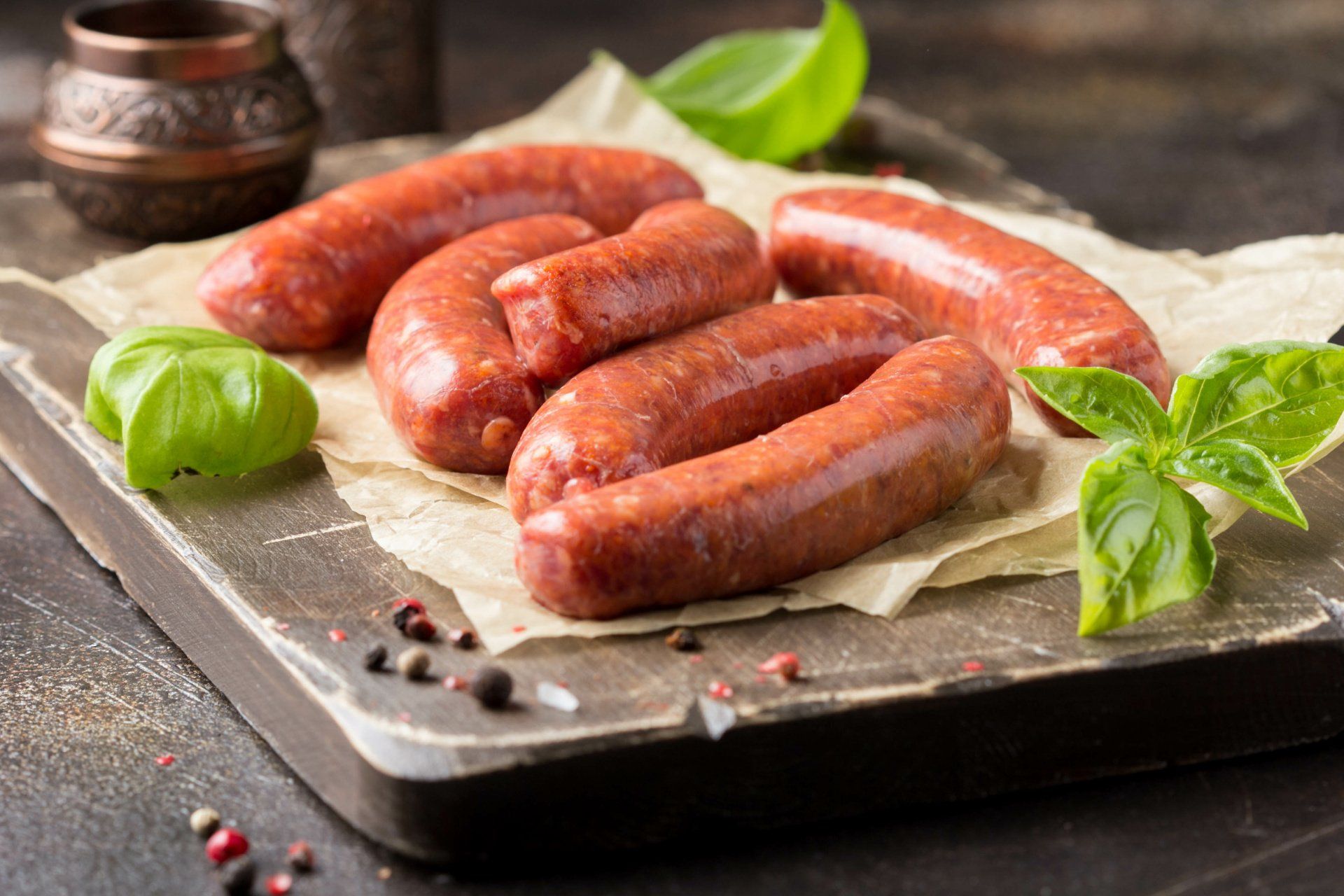
By John Jamison
•
21 Apr, 2021
Here comes summer, the perfect grilling season. We always prefer cooking outdoors at this time of year and our menu often includes merguez, our favorite spicy sausage, grilled to perfection, juicy and delicious. John’s favorite culinary treat that he has written about often is grilled spicy merguez paired with my famous garlicy hummus and paired with a cold beer! Of course, our merguez sausage is perfect for a sandwich with grilled onions and peppers or as an appetizer with cold cucumber dip. There are so many ways to enjoy our ever popular sausage. The story of how it all began…. Sukey and I figure that we started making Merguez in the late 1990’s. It was really just a happenstance. Sukey and I were handing out samples of Lamb at The Book and the Cook event in Philadelphia. We had been developing various products to use up the shoulders and legs which were not selling on a regular basis at that time. We had created a Lamb Stew with our friend, Jean-Louis Palladin, a Lamb Barley Soup and a Lamb Pie which won an award at “The Fancy Food show” in New York City. While these were starting to sell, we decided to try making sausage, hoping we would cover a broader market. This food show was in Eastern Pennsylvania after all, where everyone eats sausage, so we thought it would be a good venue for us. Our first attempt was a plain sausage which had sage in it which gave it a flavor similar to an American Breakfast Sausage. The second was a spinach and feta sausage with its obvious Greek influence. We worked over time developing these recipes and we thought we had two good sausages and a good line of handmade prepared products. So there we were, smiling and happy, handing out samples of barley soup and both sausages talking with prospective customers, when two somewhat familiar faces in full Chef’s Whites were hurrying through the grid of serving station tables. As they started to pass by us, I recognized them and asked them to come over to try a sample. Sukey and I had known Jacques Pepin and Alain Sailhac from The International Association of Culinary Professionals. Both were there promoting The French Culinary Institute which was headed by Chef Sailhac. We were starstruck that they recognized us and decided to stop and sample some lamb. Chef Pepin went straight to the sausages while I was talking to Chef Sailhac. I was trying to remain calm, talking with one chef who had been at Le Cirque in NYC for years, while nebbing in (as we say in Pittsburgh) to see how one of the most famous chefs in the country liked our sausage. He tried a bite of both types and then turned to Sailhac, started speaking in French, but was obviously pleased. They were discussing something about the sausages but the only word that caught my ear was, “Merguez.” Chef Pepin then turned to me and said, “These are very good, but you must make Merguez.” Merguez? So it started. We hadn’t even heard of Merguez as a sausage in this country. We had heard the name thrown about by Chefs which is why it had caught my attention when the two were talking. If French Chefs of this stature were interested, we had best check it out. So we researched it, studied it, consulted various sources and, with Chef Pepin’s suggestion, came to Paula Wolfert’s books, authority on all things Moroccan. Following her lead, testing and trying to match what we thought Merguez should taste like, we sent to a few of our French chef customers. That’s when the fun started! We sent samples to Jean Joho in Chicago, Jean-Marie Lacroix in Philadelphia, Jean-Louis Palladin in D.C., and Jacques Pepin at his house in Connecticut. Within days I had great Gallic disagreement, with these chefs passionately pounding out the fine points of what “his,” Merguez should taste like. “More Sumac,” “Too much Paprika,” etc. We learned from their comments. We sent the “tweaked,” Merguez back to them. Everyone was happy. We loved it…..and then Sukey ramped up the coriander, just a touch. Wow! That made it “just right!” We created our own recipe and have been making our Merguez the same way for twenty plus years, long before it became popular in this country. We have always received compliments, especially from our customers who have spent time in parts of France and North Africa where Merguez is both a staple and a street food. It is made regularly by us from only our own lamb. We think it’s the best we’ve ever tasted. A delicious way to enjoy merguez Fennel salad with merguez: For salad: 1 head radicchio 2-3 Belgian endive 1 large fennel bulb 1 lb. merguez sausage- grilled or sautéed and cut into 1” lengths 1/2 cup coarsely grated parmesan cheese For dressing: 3 T chopped fennel frond 1 teaspoon Dijon mustard 3 teaspoon chopped shallot 2 T lemon juice 1 teaspoon salt 1 teaspoon honey ½ teaspoon coarse ground pepper 1/3 cup olive oil Slice and chop salad mix into bite size pieces. Toss with parmesan cheese. Grill or sauté merguez sausage until medium, just done. Slice into 1” lengths. Prepare vinaigrette in mini blender. Place all ingredients except oil in blender. Pulse to combine. Taste for seasoning. Add oil at the end to emulsify. Add 1 teaspoon water if too thick. Pour vinaigrette over vegetable salad. Plate salad, add merguez and sprinkle parmesan on top.
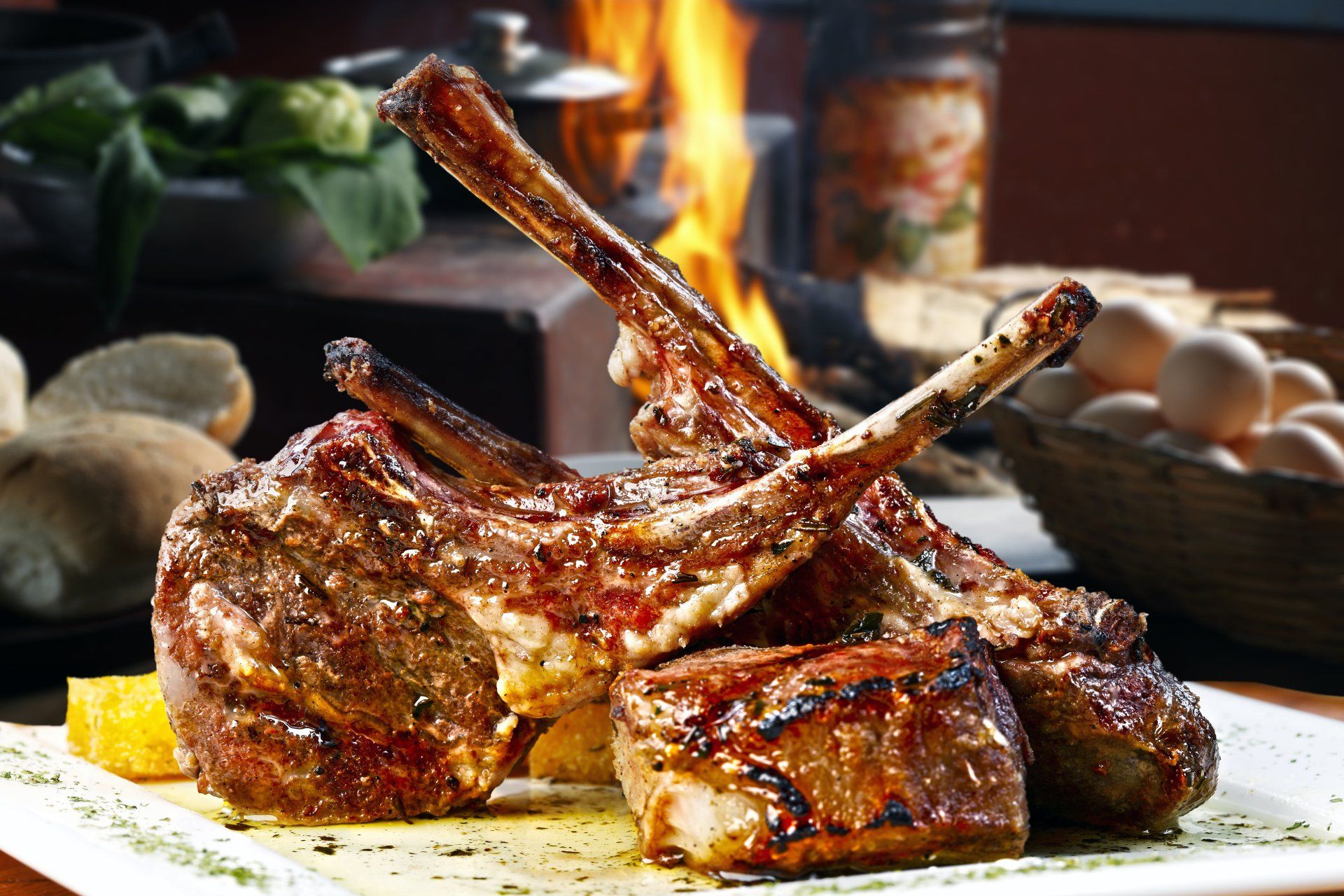
By John Jamison
•
18 Dec, 2017
One of us is seventy years old. The other is fast approaching that age. As many people in this age bracket, both of us sometimes question our relevance. Indeed, just two days ago I was asked a question by a millennial regarding the sustainability of livestock agriculture because of our dwindling supply of water. It was more of a challenge than a question.
By John Jamison
•
11 Sep, 2017
Daniel Boulud wanted racks for a lunch he was doing for Rudy Giuliani and Kofi Anan after they flew over Ground Zero in a helicopter.
By Sukey Jamison
•
28 Sep, 2016
It’s a sad day in Latrobe. Arnie died on Sunday. People asked me over the years what he was like. I always let them know that he was just like he seemed on TV. Just a great guy who hit the heck out of a golf ball, and never talked down to anyone.
ADDRESS
Jamison Farm
171 Jamison Lane
Latrobe, PA 15650
724 237 3137
sukey@jamisonfarm.com
john@jamisonfarm.com
Jamison Farm
from our farm to your table
It is a very exciting time for us farmers now authors to be promoting Jamison Farm and our new book! Coyotes in the Pasture and Wolves at the Door is now available at the farm and on Amazon.
This summer we are planning more events, appearances and radio spots to spread the word about the farm and our book. Join us on the air or in person at our signings. We hope to see you! To save a date for your own private event at Jamison Farm, please contact Sukey
sukey@jamisonfarm.com
Listen to our episode on Farm to Table Talk with Rodger Wasson
https://farmtotabletalk.com/dream-success-transition-john-sukey-jamison/
*********

